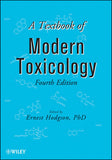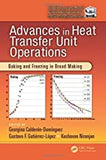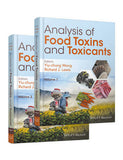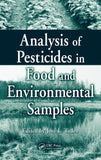Advances in Dairy Ingredients By Geoffrey W. Smithers (Editor), Mary Ann Augustin (Editor)
Advances in Dairy Ingredients
Contributors xv
Preface xvii
1 Dairy Protein Powders 3
P. Schuck
1.1 Introduction 3
1.2 Extraction of Milk Proteins 5
1.2.1 Milk proteins 5
1.2.2 Separation of proteins 5
1.2.3 Pretreatment of milk 6
1.3 Drying Principles 10
1.3.1 Roller drying 10
1.3.2 Spray drying and fl uid bed drying/cooling 11
1.4 Drying of Dairy Proteins 17
1.4.1 Heat treatment 17
1.4.2 Water transfer 18
1.4.3 Energy consumption 18
1.5 Powder Properties 20
1.5.1 Powder structure 20
1.5.2 Particle size distribution 20
1.5.3 Powder density 20
1.5.4 Flowability 21
1.5.5 Rehydration of dairy protein powders 22
1.6 Conclusion 25
2 Lactose: Chemistry, Processing, and Utilization 31
J.A. Hourigan, E.V. Lifran, L.T.T. Vu, Y. Listiohadi, and R.W. Sleigh
2.1 Introduction 31
2.2 Forms and Properties of Lactose 32
2.2.1 Types of lactose 33
2.2.2 Mutarotation 38
2.2.3 Solubility and supersaturation 38
2.2.4 Properties of lactose crystals 42
2.3 Manufacture of Lactose 43
2.3.1 Industrial processes for α-lactose monohydrate 44
2.3.2 Creation of amorphous lactose during the α-lactose
monohydrate manufacturing process 47
2.3.3 Crystallization theory and research trends 48
2.3.4 Effect of impurities on lactose crystal growth 51
2.4 Effect of Moisture on Lactose in the Solid State 53
2.4.1 Moisture-induced crystallization of amorphous lactose 53
2.4.2 Effect of moisture on the crystalline forms of lactose 56
2.4.3 Effect of moisture and amorphous lactose content in
lactose-rich dairy powders 57
2.5 Lactose Applications 58
2.6 Summary 60
3 Dairy Ingredients Containing Milk Fat Globule Membrane:
Description, Composition, and Industrial Potential 71
X. Elías-Argote, A. Laubscher, and R. Jiménez-Flores
3.1 Introduction 71
3.2 Origin and Function of the MFGM 73
3.3 Composition and Structure of the MFGM 75
3.3.1 Lipids of the milk fat globule membrane 76
3.3.2 Milk fat globule membrane proteins 79
3.4 Health Benefi ts of the Milk Fat Globule Membrane 83
3.4.1 Anticancer properties of MFGM 83
3.4.2 Antimicrobial and antiviral properties of the MFGM 84
3.4.3 MFGM and lactic acid bacteria binding 84
3.5 Technical Aspects and Foods Based on MFGM 85
3.5.1 Emulsifying and stabilizing properties of MFGM 85
3.5.2 Potential delivery systems derived from MFGM 86
3.5.3 MFGM components as part of food systems 86
3.5.4 Isolation of the MFGM 87
3.6 MFGM: A Novel Product from Dairy Products 88
3.7 Methodology to Monitor the Biological Activity of the MFGM
Before and After Processing 90
3.7.1 Atomic force microscopy 90
3.7.2 Confocal laser scanning microscopy 90
3.7.3 Laser tweezers and the MFGM 91
3.8 The Future of MFGM and Its Components 92
4 Biofunctional Dairy Protein Fractions 99
H. Roginski, L. Bennett, H. Korhonen, S.F. Gauthier, Y. Pouliot,
and B.W. Woonton
4.1 Introduction 99
4.2 Physiologically Active Peptides from Milk 99
4.2.1 Antihypertensive peptides 100
4.2.2 Biological role of antithrombotic peptides 101
4.2.3 Biological role of immunomodulatory peptides 102
4.2.4 Biological role of opioid receptor-binding peptides 103
4.2.5 Biological role of metal-binding peptides 104
4.2.6 Conclusions 105
4.3 Antimicrobial and Antiviral Effects of Milk Proteins and Peptides 105
4.3.1 Antimicrobial proteins 106
4.3.2 Antimicrobial peptides 110
4.3.3 Antiviral proteins and peptides from milk 114
4.3.4 Conclusions 116
4.4 Immunoglobulins 116
4.4.1 Structure 117
4.4.2 Recovery and purifi cation 117
4.4.3 Biological effects 118
4.5 Milk Growth Factors 118
4.5.1 Composition and characteristics 119
4.5.2 Methods for extracting growth factors 119
4.5.3 Health benefi ts of milk growth factors 122
4.5.4 Future developments 123
4.6 Glycomacropeptide 123
4.6.1 Structure 123
4.6.2 Physiological effects in humans and animals 125
4.6.3 Future developments 126
5 Modern Chromatographic Separation Technologies for Isolation of
Dairy Ingredients 137
B.W. Woonton, U. Kulozik, K. De Silva, and G.W. Smithers
5.1 Introduction 137
5.2 Isolation of Dairy Components Using
Resin-Based Chromatography 138
5.2.1 Chromatographic hardware 138
5.2.2 Chromatographic adsorbents 141
5.2.3 Commercial applications of resin chromatography in the
dairy industry 145
5.3 Membrane Adsorption Chromatography (MAC) 148
5.3.1 Principles of MAC technology and technical description 148
5.3.2 Separation of aCMP and gCMP by means of MAC 151
5.3.3 Separation of aCMP and gCMP in a direct capture mode 154
5.3.4 Processing scheme for the separation of CMP 156
5.4 Conclusions 156
6 Nonthermal Technologies in Dairy Processing 161
H.C. Deeth, N. Datta, and C. Versteeg
6.1 Introduction 161
6.2 High Pressure Processing 164
6.2.1 Principle 164
6.2.2 Equipment and operation 165
6.2.3 Effect on milk components 166
6.2.4 Applications 172
6.3 High Pressure Homogenization 177
6.3.1 Principle 177
6.3.2 Effect on milk components 178
6.3.3 Effect on products 183
6.3.4 Commercial developments 184
6.4 Ultrasonication 184
6.4.1 Principle 185
6.4.2 Setup 185
6.4.3 Effect on milk components 186
6.4.4 Applications 189
6.4.5 Commercial developments 192
6.5 Pulsed Electric Field Technology 192
6.5.1 Principle 193
6.5.2 Effect on milk components 194
6.5.3 Effects on products and processes 198
6.5.4 Commercial developments 199
6.6 Further Reading 200
7 Spray-Dried Dairy-Based Emulsions for the Delivery of Bioactives 217
M.A. Augustin and L. Sanguansri
7.1 Introduction 217
7.2 Considerations for Delivery of Bioactives 218
7.3 Spray-Dried Dairy-Based Emulsions 220
7.3.1 Formulation and preparation of emulsions 221
7.3.2 Spray drying of emulsions 222
7.4 Casein and Whey Protein-Based Spray-Dried Emulsions 223
7.4.1 Factors affecting physical stability 223
7.4.2 Emulsions for delivery of bioactives 224
7.5 Incorporation of Bioactive Ingredients into Functional Foods 226
7.6 Conclusion 227
8 Utilizing Dairy Protein Functionality in Food Microstructure Design 229
M. Golding
8.1 Introduction 229
8.2 Casein Functionality in Structured Foods 230
8.2.1 Acid coagulation 231
8.2.2 Enzymatic modifi cation 232
8.2.3 High pressure 236
8.2.4 Mixed biopolymer effects 241
8.3 Applications of Whey Protein Structuring
in Foods 250
8.4 Milk Proteins as Emulsifi ers 252
8.5 Milk Proteins as Foaming Agents 258
8.6 Conclusions 260
9 Probiotics and Prebiotics 269
D.Y. Ying and C. Gantenbein-Demarchi
9.1 Introduction 269
9.2 Defi nitions 270
9.3 Probiotics 271
9.3.1 Historical aspects 271
9.3.2 Overview of important probiotic strains 272
9.3.3 Health benefi ts 274
9.3.4 Safety assessments of probiotics 275
9.3.5 Consumer acceptance and product overview 276
9.3.6 Probiotic dairy products and the world market 277
9.3.7 Other probiotic food products and recent developments 278
9.3.8 Guidelines for the evaluation of probiotics for food use 278
9.4 Prebiotics 279
9.5 Challenges and Approaches for Probiotic Ingredients 281
9.5.1 Strain selection 282
9.5.2 Understanding the probiotic mechanism 283
9.5.3 Survival of probiotics 283
9.5.4 Microencapsulation of probiotics 285
10 Dairy Ingredient Safety: The No Compromise Area 291
D. Eddy and A. Astin
10.1 Introduction 291
10.2 Background 292
10.3 Dairy Developments 292
10.4 Processing Requirements 294
10.5 Hazards and Risks 294
10.6 Regulation 295
10.7 Microbiological Ecology 296
10.8 Food Safety Programs and Food Safety Objectives 297
10.9 Emerging Processing Technologies 298
10.10 Validation and Verifi cation 299
10.11 Conclusion 300
11 Market Acceptance of Dairy Ingredients: What Consumers Are
Thinking and Demanding 303
B. Davis and B. Katz
11.1 Background: Recognition and Relevance Are Drivers of
Consumer Acceptance 303
11.2 Shopper Interest in Select Functional Benefi ts 306
11.2.1 Cognitive performance 306
11.2.2 Weight management 307
11.2.3 Lifestyle concerns 309
11.2.4 Gastrointestinal health 310
11.3 Concluding Remarks 311
12 The Future of Dairy Ingredients: Critical Considerations That Will
Underpin Future Success 313
P.S. Tong and G.W. Smithers
12.1 Introduction 313
12.2 Evolution of Dairy Ingredients 313
12.2.1 “First-generation” dairy ingredients 314
12.2.2 “Second-generation” dairy ingredients 315
12.2.3 “Third-generation” dairy ingredients 315
12.3 Next Generation of Dairy Ingredients 315
12.3.1 Verifi able dairy food quality and safety 316
12.3.2 Optimal nutritional and functional performance 316
12.3.3 Sustainability, environment, and animal welfare 316
12.4 Conclusions 316
Index 319
Mary Ann Augustin, PhD is a Professor in Chemistry at Monash University, Melbourne, Victoria, Australia. She is currently on assignment to the University from Food Science Australia. Previously, she held several science leadership positions at Food Science Australia/CSIRO including Group Manager – Ingredients; Director, Science Forum, Food Science Australia; Section Leader - Ingredient Functionality; Team Leader – Milk Powders. Prof. Augustin is inventor/co-inventor on a number of patents and innovations (proprietary) in the area of ingredients, milk powders and microencapsulated products.
- Links good science understanding of the dairy system with successful commercial outcomes
- Documents recent advances in dairy ingredients that impact food product development
- International collection of dairy ingredients experts serve as editors and authors
- Sound scientific advice on incorporating dairy ingredients into food formulations
- Describes science and technology of functional and innovative dairy ingredients
“The book is generally an excellent addition to pertinent literature in dairy sciences; it is a necessary reference for students, researchers and dairy manufacturers interested in developing and expanding the markets of their products.” (Science Progress, 1 March 2014)
Related Products
-
A Textbook of Modern Toxicology,...
8,942.00
10,520.00 -
Advances in Heat Transfer Unit O...
15,988.00
18,810.00 -
Analysis of Food Toxins and Toxi...
18,900.00
21,479.00 -
Analysis of Foods and Beverages ...
5,725.00
-
Analysis of Pesticides in Food a...
2,895.00
13,068.00
- Architecture & Construction Management Books
- Biochemistry, Bioengineering and Biotechnology Books
- Books on Analytical Techniques, GC MS, LC, TLC, HPLC, NMR Spectroscopy
- Books on Water and Wastewater Treatment, Analysis Water Treatment Plants
- Chemical Technology, Organic Chemistry, Chemical Synthesis and Chemical Analysis Books
- Cosmetics Science, Cosmetics Formulations, Manufacture and their Analysis Books
- Drugs and Pharma Science Books
- Essential Oils, their Analysis, Natural Products Extraction, Distillation , Isolates Related Books
- Flavor Science, Flavor Analysis, Flavor Creation, Food Flavors Books
- Food Science and Technology, Baking , Food Ingredients , Food Quality , Food Regulations
- Formulations of Perfumes for Agarbatti, Air Freshners, Soaps & Detergents, Fabric Softeners , French style Perfumes, Attars , OUD, Fine Fragrances
- Fragrances, Scents, Attars , Perfumery and Aroma Chemicals Books
- Herbal, Ayurvedic, Medicinal Plants and Aromatic Plants Books
- Law Books
- Major Reference Works (MRWS) Sets - MultiVolume Sets
- Medical Books
- Medical Journals Wolters Kluwer | Medknow India
- NEW ARRIVALS
- Perfumer's Resources
- Special Indian Reprint !

















